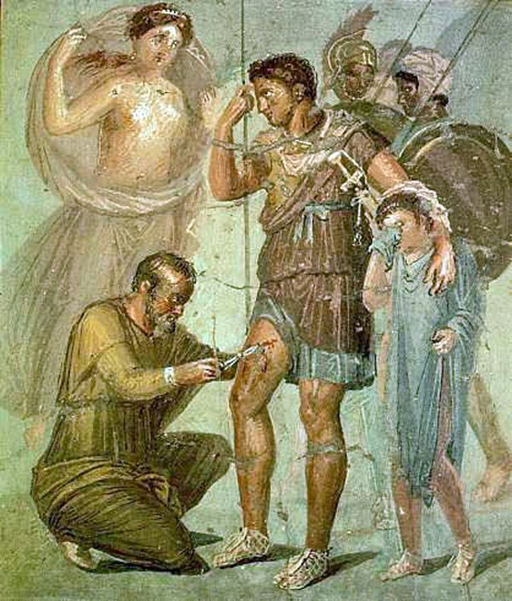3.4 Battle wounds and surgery in art and literature
Information about field treatments comes down through the ages in poetry, images and medical literature. You will now begin to explore these types of evidence to learn about battle wounds and surgery.
Figure 18 shows a fresco found on a wall of a house in Pompeii, depicting the Roman hero Aeneas having a spear head removed from his thigh by the doctor, Iapyx. Aeneas is leaning on his son, Ascanius, and his mother, the goddess Venus, is helping from behind. Aeneas was ultimately healed through the divine intervention of Venus.
Activity 5
Now read this extract from Virgil’s epic poem, the Aeneid [Tip: hold Ctrl and click a link to open it in a new tab. (Hide tip)] (Book 12, lines 383–440) and compare what you read with the image from the fresco in Figure 18.
In the poem, it’s the goddess Venus who makes the doctor think of using a healing balm made of Cretan dittany, an aromatic plant used in medicine. Do you think the image matches the section of the Aeneid you have just read? Who is playing the central part in healing?

